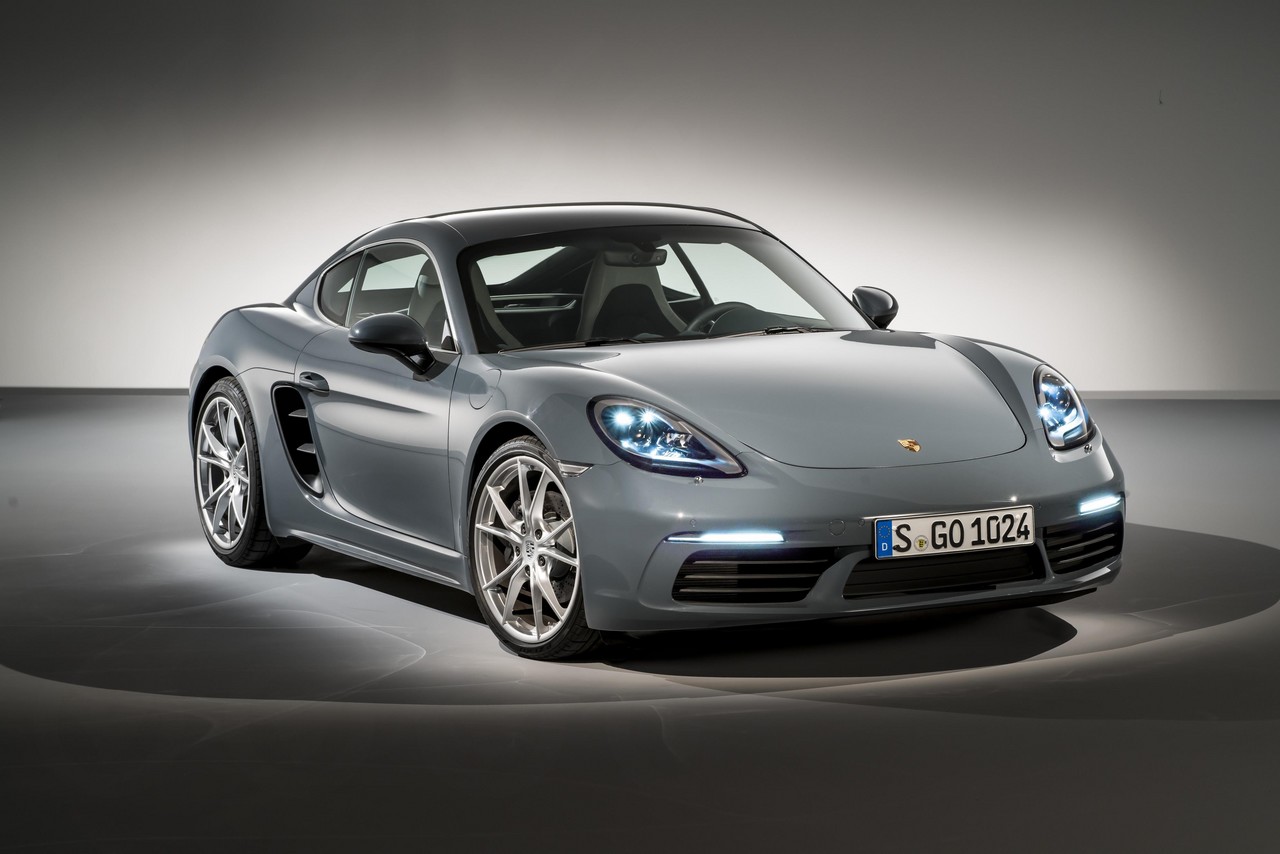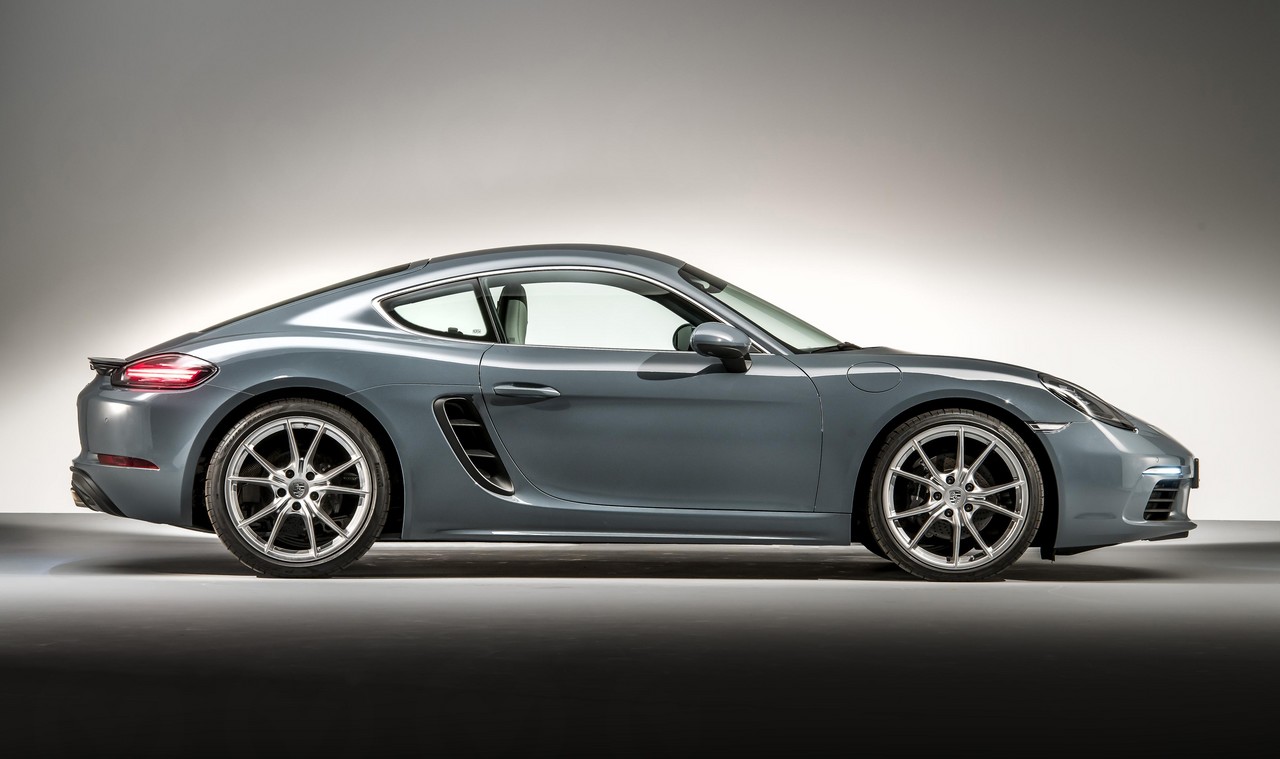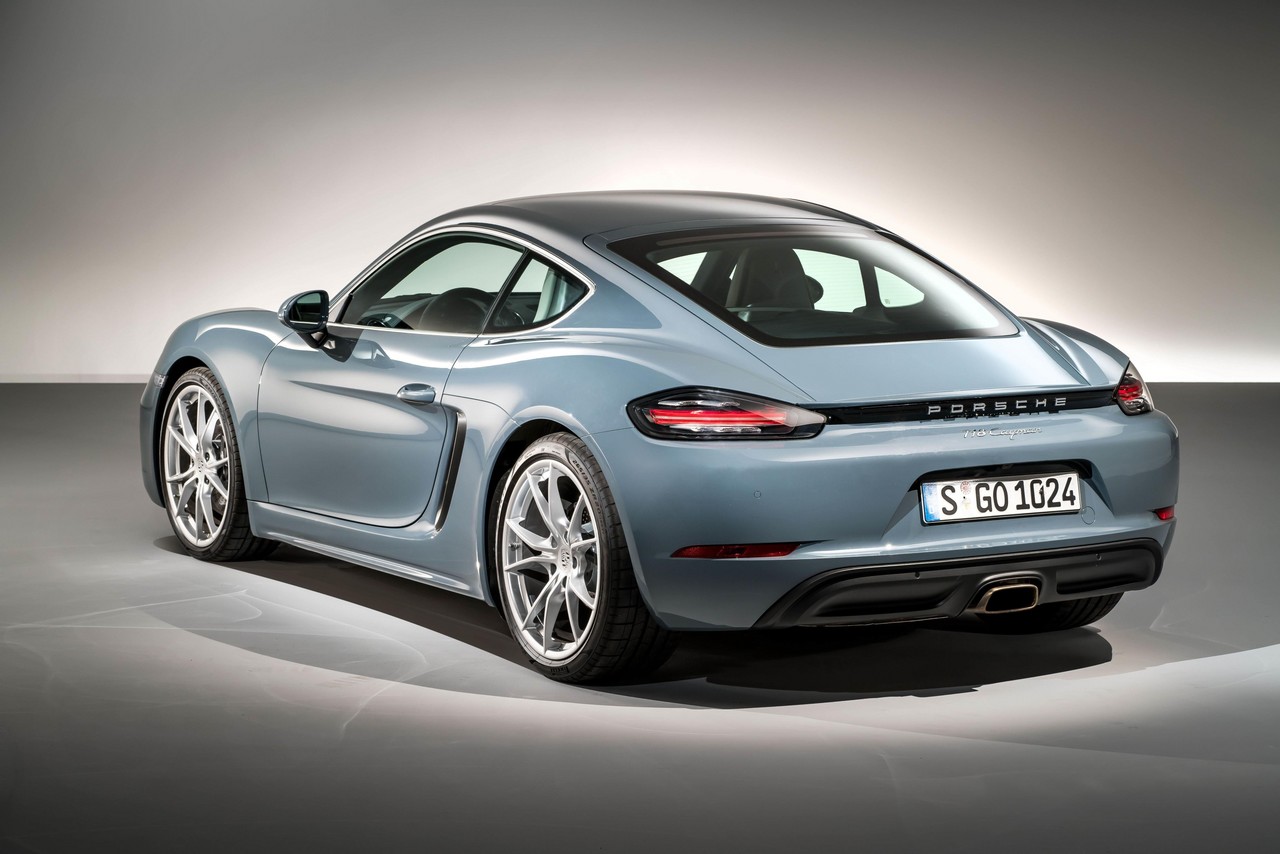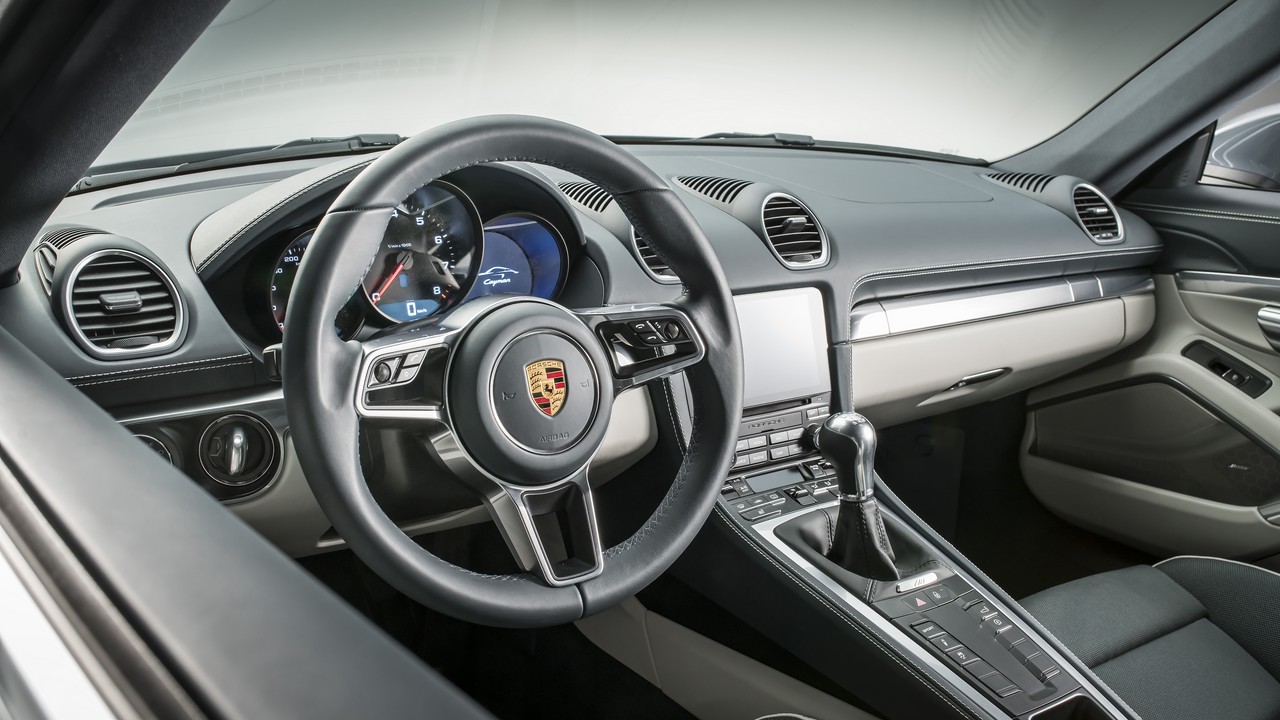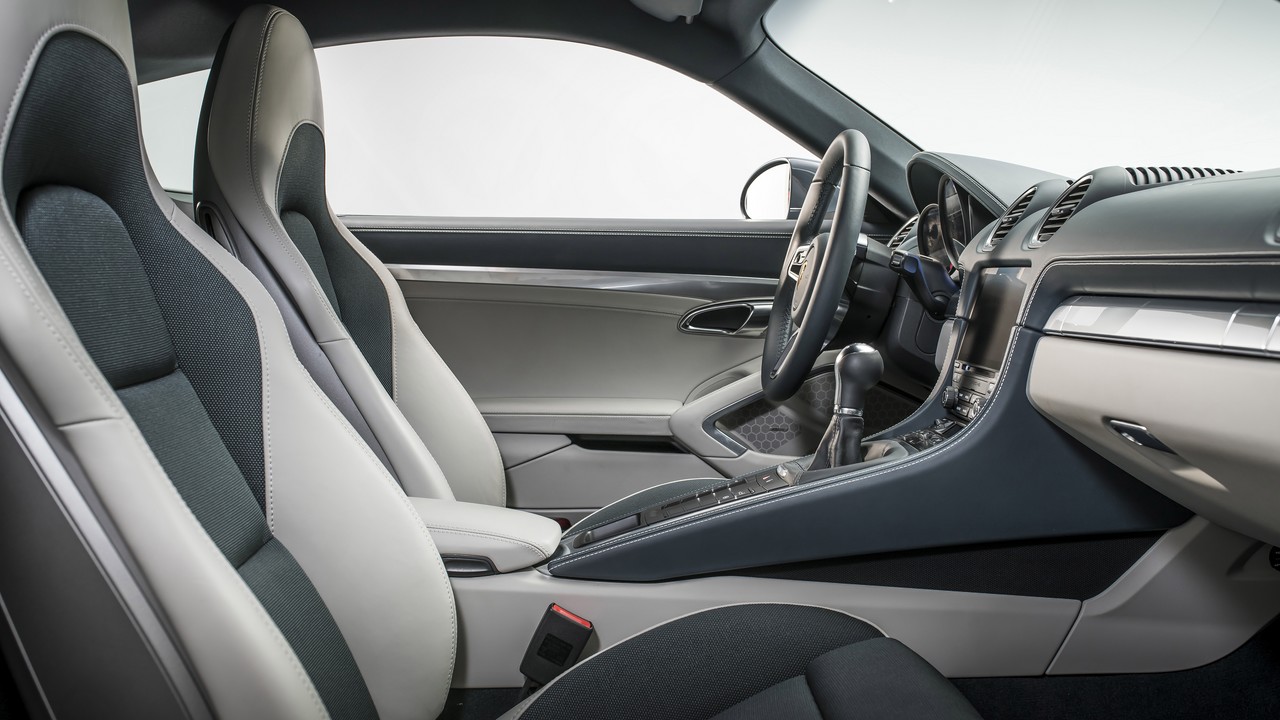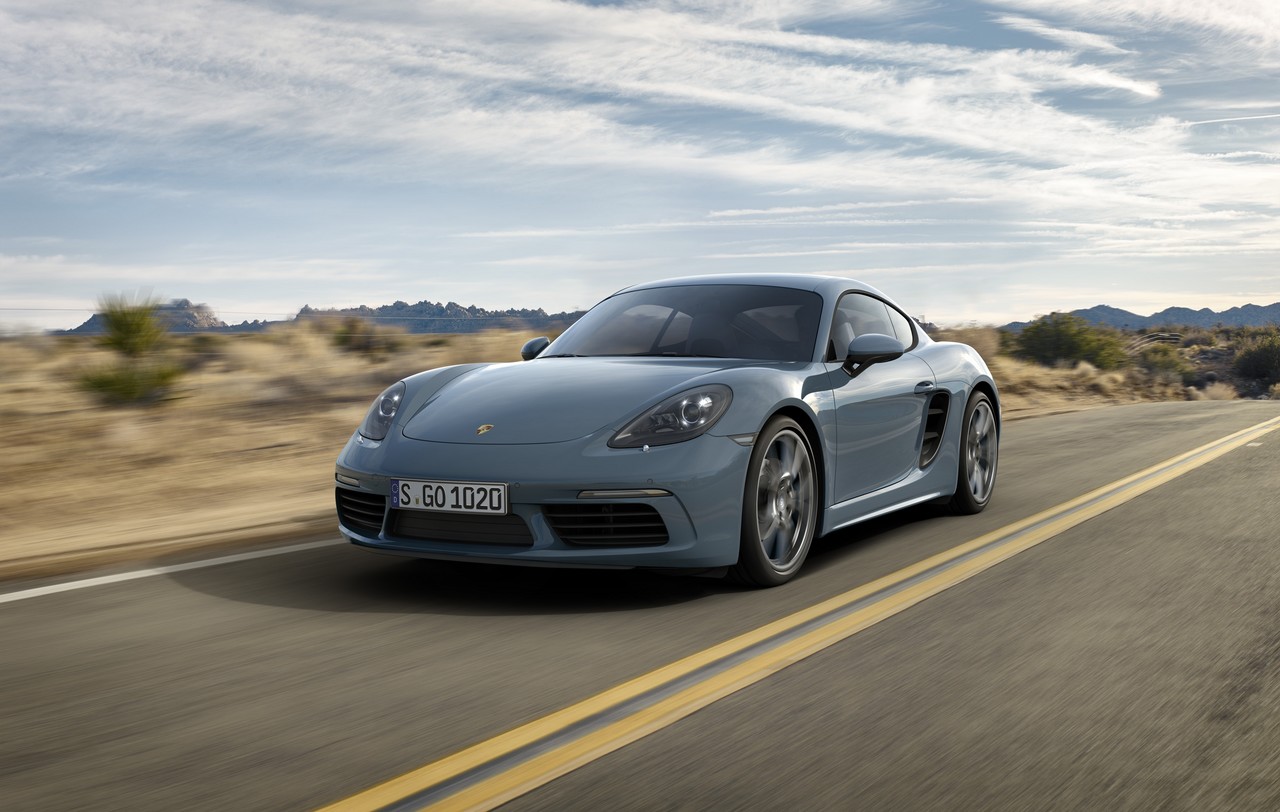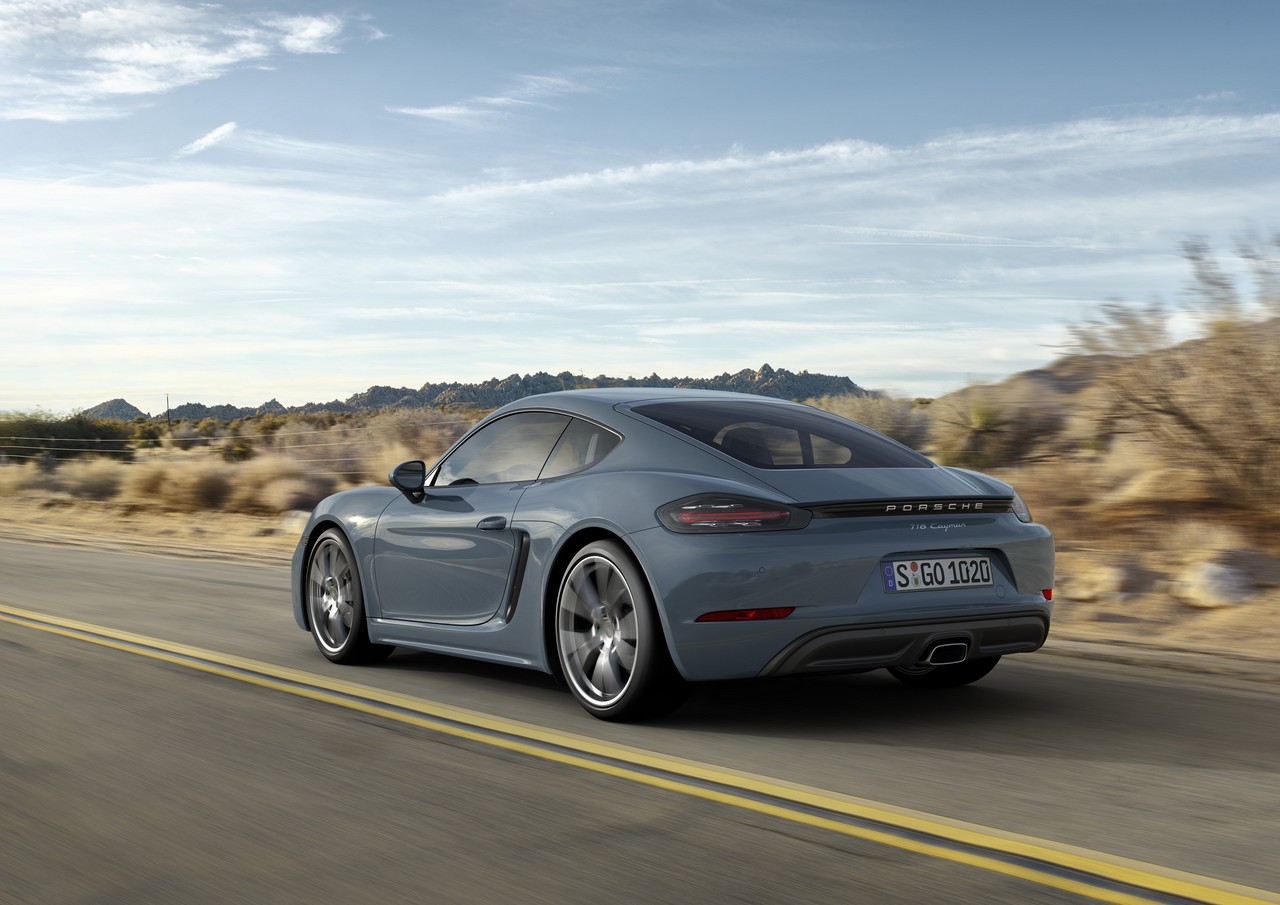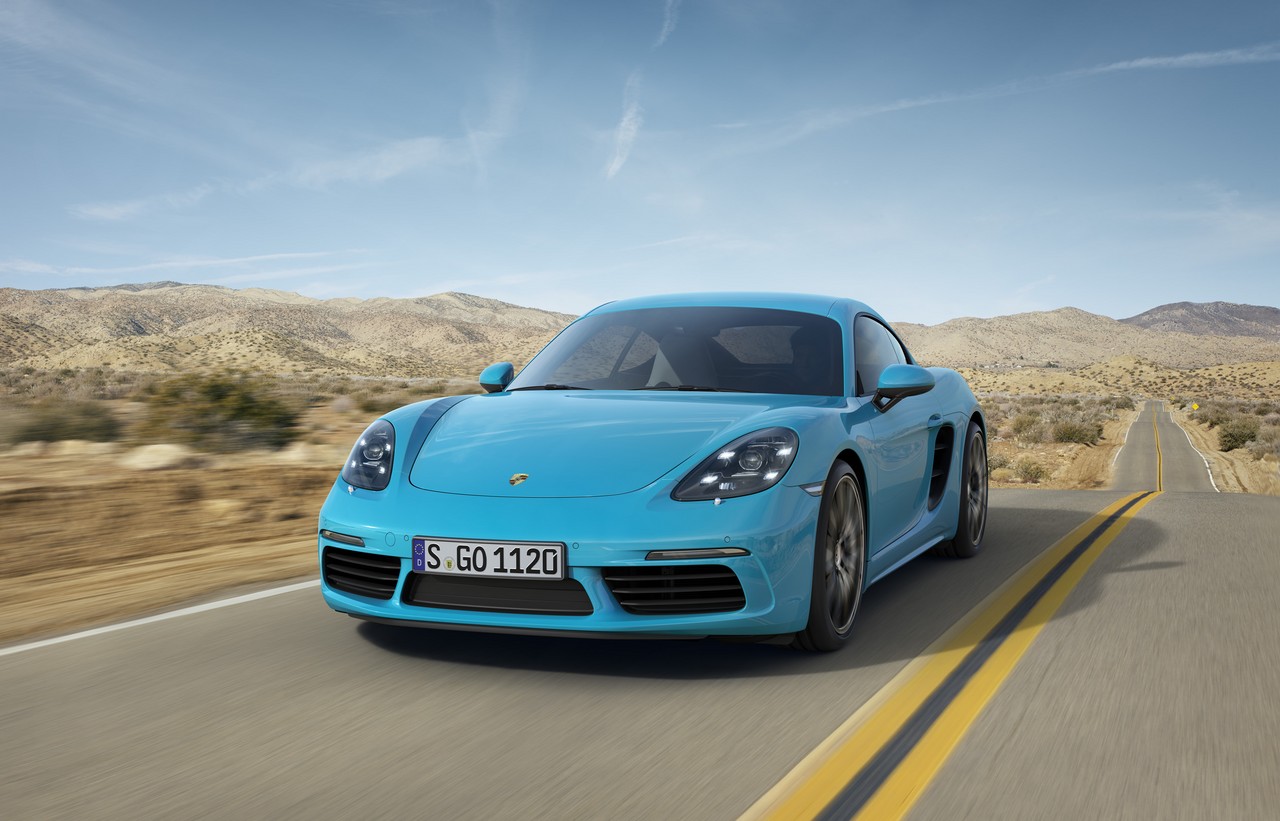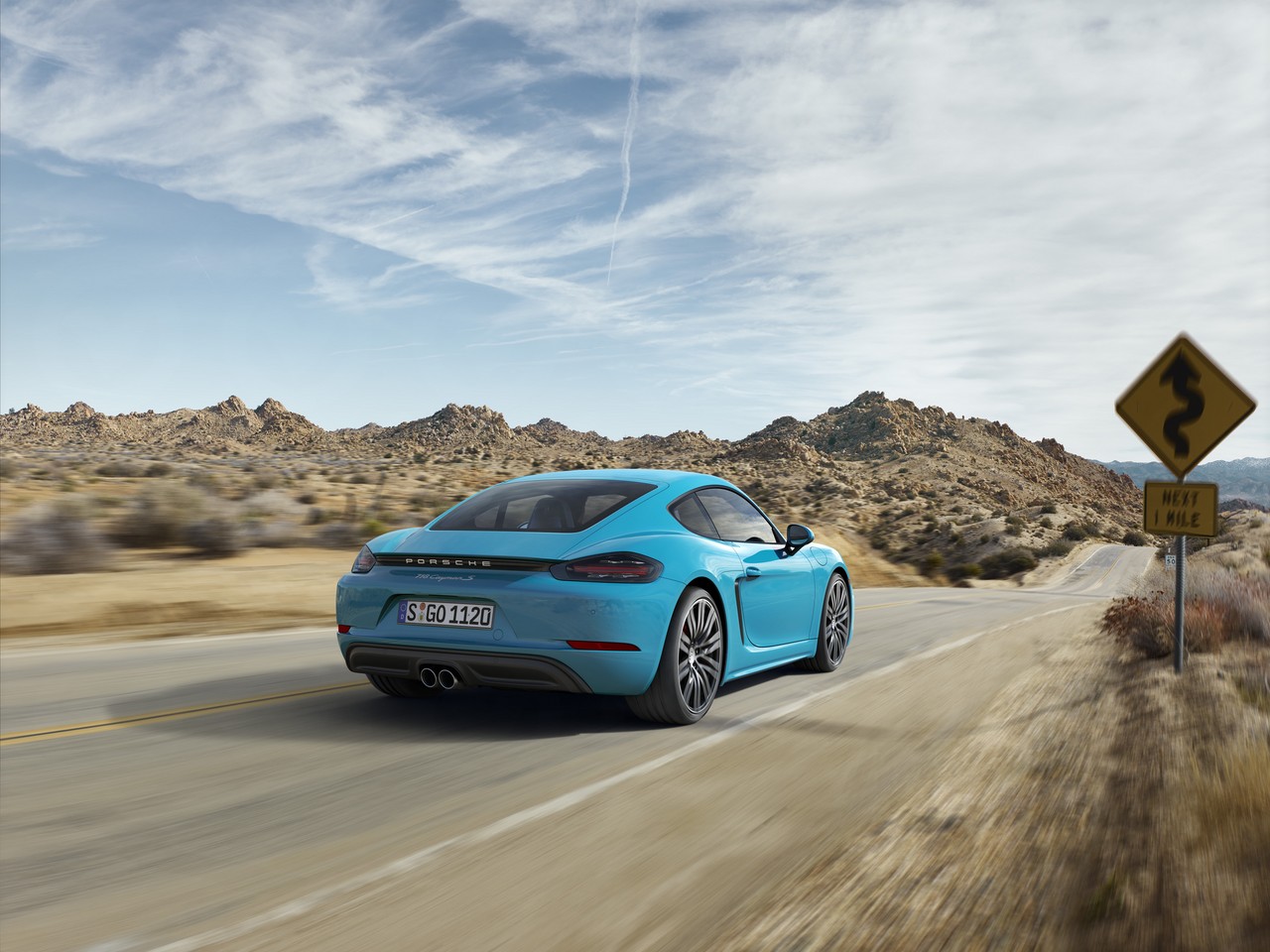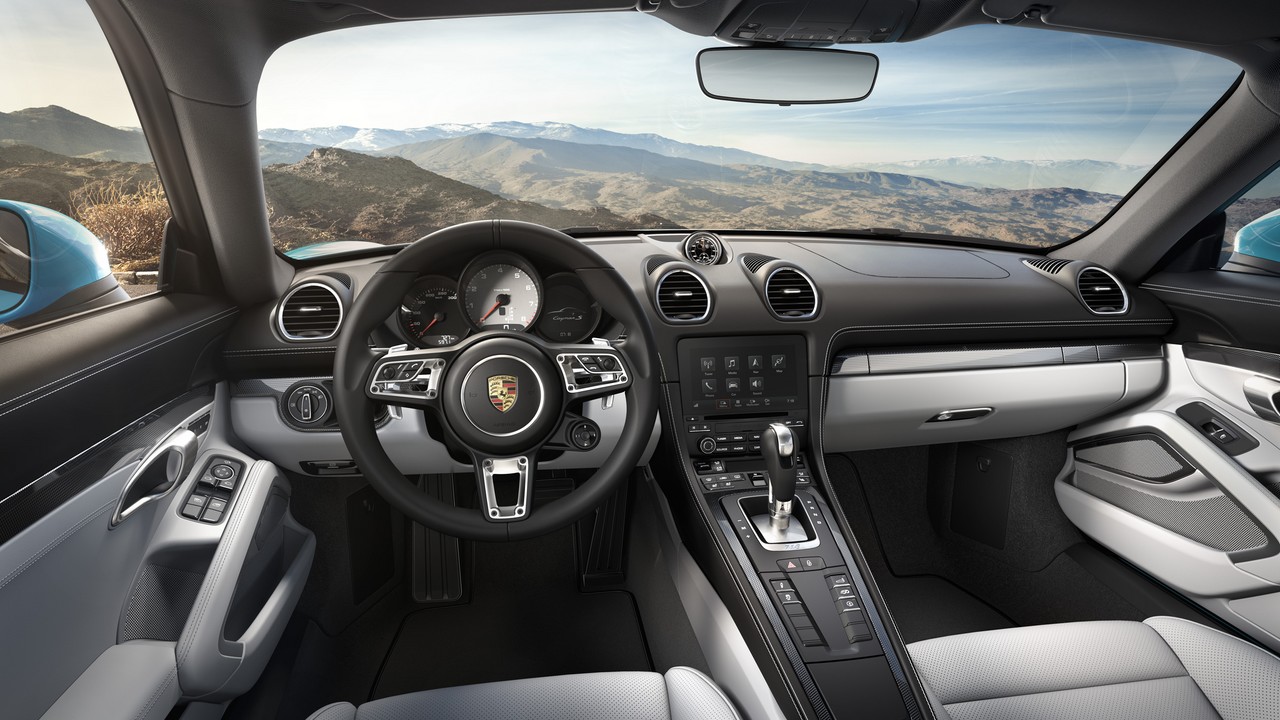
- Fuel-efficient turbocharged engines
- Balanced, agile chassis
- Outstanding ride/handling balance
- Precise, well-weighted steering
- Where are the collision avoidance technologies?
- Porsche has limited performance to protect the Porsche 991 911 Coupe
- Driving position lacks legroom for tall drivers
- Pedals slightly offset
- High servicing and repair costs
Overview
Released in Australia in late 2016, the Porsche 718 Cayman was a mid-engined, two-door coupe. Manufactured in Stuttgart, Germany, the rear-wheel drive 718 Cayman and Cayman S were powered by 2.0- and 2.5-litre horizontally-opposed petrol engines, respectively (see table below).
The Porsche 718 Cayman GTS was available to order from October 2017, with deliveries commencing in March 2018.
DDP and DDN engines
For the 718 Cayman, the 1988 cc DDP four-cylinder horizontally-opposed engine had an aluminium alloy block with a 91.0 mm bore and 76.4 mm stroke, in which the cylinder liners were coated in iron via a plasma beam (‘rotating single wire’ or RSW). Other features of the DDP engine included an aluminium alloy cylinder head with double overhead camshafts, ‘VarioCam Plus’ for variable intake and exhaust valve timing and lift, four valves per cylinder, direct injection via centrally positioned injectors at a pressure of up to 250 bar, cross-flow cooling, integrated dry sump lubrication and a compression ratio of 9.5:1. For the 718 Cayman S, however, the 2497 cc DDN engine had an extended bore of 102.0 mm. To reduce fuel consumption, both the DDP and DDN engines had an ‘auto start/stop’ function that would shut down the engine when the vehicle was stationary in traffic.
For the 718 Cayman, the turbocharger had a 50 mm diameter turbine wheel, 58 mm diameter compressor wheel and provided maximum boost pressure of 1.4 bar. For the 718 Cayman S, however, the turbocharger had a 55 mm diameter turbine wheel, 64 mm diameter compressor wheel and provided maximum charge pressure of 1.0 bar. The Cayman S also had variable turbine geometry in which adjustable vanes controlled the flow of exhaust gases onto the turbine wheels. At low engine speeds, the vanes would be nearly closed to build boost pressure and torque more quickly and, at high engine speeds, the guide vanes would open for greater flow.
The lateral air intakes behind the doors were used for induction of process air and for indirect intercooling. To reduce the temperature of the charged air, a heat exchanger was positioned on top of the engine and cooled using an auxiliary loop of the cooling system
When the Sport or Sport Plus modes were activated, the turbocharger could be ‘pre-conditioned’ in part-load situations by closing the bypass valve, retarding ignition timing and slightly opening the throttle – according to Porsche, this maintained momentary drive torque while increasing air throughput through the engine and charge pressure. When the driver applied full throttle, the higher charge pressure provided greater torque. The extent of ‘pre-conditioning’ differed according to whether Sport or Sport Plus drive modes were engaged.
The ‘Dynamic Boost’ function was activated when the driver briefly removed their foot from the accelerator pedal after full acceleration by keeping the throttle wide open and only stopping petrol injection – this prevented charge pressure from dropping completely for greater torque when the accelerator was depressed. In Normal mode, the Dynamic Boost function also improved engine response in quick throttle alternations, albeit with lesser effect.
| Engine | Trans. | Peak power | Peak torque | |
|---|---|---|---|---|
| Cayman | 1988 cc DDP turbo petrol F4 | 6sp man., 7sp DCT |
220 kW at 6500 rpm | 380 Nm at 1950-4500 rpm |
| Cayman S | 2497 cc DDN turbo petrol F4 | 6sp man., 7sp DCT |
257 kW at 6500 rpm | 420 Nm at 1900-4500 rpm |
| Cayman GTS | 2497 cc turbo petrol F4 | 6sp man., 7sp DCT |
269 kW at 6500 rpm | 430 Nm at 1900-5000 rpm |
Body and dimensions
Compared to the Porsche 981 Cayman , the 718 Cayman was 1 mm shorter (at 4379 mm) and 1 mm taller (1295 mm), though width (1801 mm) and wheelbase length (2475 mm) were unchanged. Like its predecessor, the chassis of the 718 Cayman had mixed aluminium/steel construction in which 44 per cent of the body-in-white consisted of aluminium (including the front body, floor and rear body, the doors and bootlid).
Changes relative to 981 Cayman
Relative to the Porsche 981 Cayman , the 718 Cayman could be identified by the ‘sharper profile’ for its nose, new bi-xenon headlights with integrated LED daytime running lights, ultra-slim front lights above the air intakes and larger cooling air intakes. At the rear, the 718 Cayman had a wider appearance due to the high-gloss black accent strip between the redesigned tail-lights which featured ‘three-dimensional technology and four brake spots that appeared to float freely’.
Inside, the 718 Cayman had a new upper dashboard panel, a new steering wheel design as per the 918 Spyder and an updated Porsche Communication Management (PCM) system which was fitted as standard for Australian-delivered vehicles.
Suspension and PASM
The Porsche 718 Cayman had MacPherson strut suspension front and rear. Compared to the 981 Cayman, the 718 Cayman had re-tuned suspension for better lateral rigidity and wheel tracking. Furthermore, the shock absorbers were been revised, while the springs and stabiliser bars were stiffened.
Porsche Active Suspension Management (PASM) was fitted as standard for the Cayman GTS and an extra-cost option for the Cayman and Cayman S. With continuously adjustable shock absorbers and a pair of accelerometers, PASM enabled the driver to select from Normal, Sport, Sport Plus and ‘Individual’ settings. For the 718 Cayman and Cayman GTS, PASM reduced the ride height by 10 mm; for the Cayman S, ride height was reduced by 20 mm.
Steering
The 718 Cayman had rack-and-pinion steering with electric power-assistance. Relative to the 981 Cayman, the steering for the 718 Cayman had a 10 per cent more direct ratio.
Safety equipment
Standard safety equipment for the Porsche 718 Cayman included dual front airbags, front seat-mounted thorax airbags, curtain airbags, ABS, electronic brake force distribution, brake assist, electronic stability control, traction control and front seatbelts with pre-tensioners and load limiters.
As standard, the 718 Cayman was equipped with a ‘multi-collision brake’ function which, after an initial collision, would automatically apply the brakes for controlled deceleration – this reduced vehicle speed and therefore the severity of any subsequent collision. The operation of multi-collision brake, however, could be over-ridden by the driver.
As an extra-cost option, the 718 Cayman could be specified with Porsche’s ‘Lane change assist’.
Wheels and brakes
Relative to the 981 Cayman, the rear-wheels for the 718 Cayman and Cayman S were half an inch wider. As such, the 718 Cayman had 8.0J x 18-inch front and 9.5J x 18-inch rear alloy wheels, while the Cayman S had 8.0J x 19-inch front and 10.0J x 19-inch rear alloy wheels.
The 718 Cayman had 330 mm by 28 mm vented front brake discs (with four-piston calipers) and 299 mm by 20 mm vented rear discs; the Cayman S, however, had 330 mm by 34 mm vented front brake discs.
Features: 718 Cayman and Cayman S
Standard features for the 718 Cayman included the Porsche Communication Management (PCM) including navigation module and Bluetooth mobile phone connectivity, a 150 watt sound system with eight speakers and digital radio tuner (Porsche’s ‘Sound Package Plus’), dual-zone climate control air conditioning, front sports seats with fourteen-way power adjustment and memory settings, heated seats, cruise control, bi-xenon headlights with Porsche Dynamic Light System (PDLS), dusk-sensing headlights, rain-sensing wipers, front and rear parking sensors, a leather-wrapped steering wheel with heating, remote central locking, power adjustable and heated door mirrors, power windows, a height and reach adjustable steering wheel, a wind deflector, trip computer, tyre pressure monitoring, an alarm and immobiliser.
Features: Porsche 718 Cayman GTS
Compared to the Cayman S, the Cayman GTS was fitted as standard with:
- Porsche’s Sport Chrono Package with selectable drive settings (see below);
- Porsche Torque Vectoring (PTV) with mechanical rear differential lock; and,
- Porsche Active Suspension Management (PASM) which lowered the body by 10 mm.
Inside, the Cayman GTS featured two-way power adjustable front sports seats with Alcantara centre panels, GTS logos on the headrests, and Alcantara trim for the steering wheel, centre console and armrests.
Visually, the Porsche 718 Cayman GTS could be identified by its new ‘Sport Design’ front bumper, black-tinted front light clusters and bi-xenon headlights, 20-inch wheels painted in black (satin finish) and black GTS logos at the base of the doors. At the rear, the Cayman GTS had tinted tail lights, black logos, a black lower bumper and centrally positioned black tailpipes.
Sport Chrono Package and ‘Sport Response’ button
As an extra-cost option, the 718 Cayman could be specified with a Sport Chrono Package which enabled the driver to select from Normal, Sport, Sport Plus and Individual settings; ‘Individual’ enabled the driver to separately program settings for PASM, the sport exhaust system, auto start/stop function and rear spoiler via a menu in the instrument cluster.
For models with the PDK, the Sport Chrono Package also included a ‘Sport Response’ button. Pressing the ‘Sport Response’ button prepared the engine and transmission for ‘spontaneous responsiveness’ for 20 seconds. At part-load, the wastegate of the turbocharger was closed so that charge pressure would be generated more quickly. When the ‘Sport Response’ button was pressed, the PDK would also downshift and engage a special shifting map which had higher shift points than Sport Plus.
Related links
